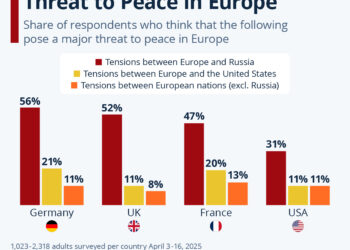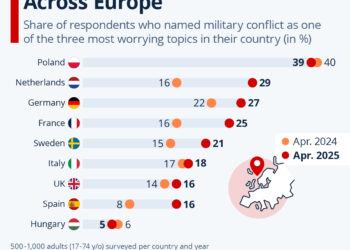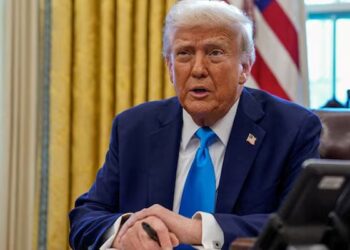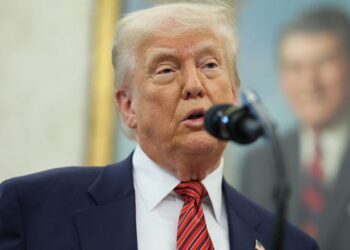Key Moments in President Trump’s Second Term: The First 100 Days
Since returning to the White House, President Donald Trump has drastically shifted U.S. foreign policy, created turmoil in the financial markets, and turned the Oval Office into a whirlwind of major events. Below, we highlight ten significant moments from the first 100 days of his second term.
January 20: A Surge of Executive Orders
On his first day back, Trump signs an unprecedented 26 executive orders. His actions immediately set a confrontational tone, such as withdrawing the United States from the World Health Organization and granting pardons to individuals who participated in the Capitol riots four years ago.
Trump signs an executive order aimed at overhauling the U.S. electoral process. — AFP
February 4: A Bold Proposal for Gaza
During talks with Israeli Prime Minister Benjamin Netanyahu, Trump suggests that the embattled Gaza Strip might be transformed into "the Riviera of the Middle East" under U.S. control. He proposes a redevelopment plan for the area, indicating hopes of relocating the Palestinian population, prompting widespread condemnation worldwide.
February 12: A Unique Press Conference
In an unusual event, Trump holds a press conference in the Oval Office alongside billionaire entrepreneur Elon Musk and his son. Musk, who heads federal budget-cutting efforts through the newly formed Department of Government Efficiency (DOGE), faces scrutiny over transparency issues, while young X — Musk’s son — adds a peculiar touch to the proceedings with his fidgeting.

Elon Musk’s son, X A-Xii, shares the spotlight with Trump in the Oval Office. — Reuters
February 12: Renewed Relations with Russia
Trump reaches out to Russian President Vladimir Putin, holding a substantial 90-minute phone conversation that breaks years of diplomatic silence. This leads to a second call later in the month and a series of U.S.-Russia meetings exclusive of European nations, resulting in notable prisoner exchanges.
February 14: Vance’s Bold Speech in Munich
Vice President JD Vance delivers a surprising address at the Munich Security Conference, admonishing European leaders for limiting free speech, demanding they enhance their defense efforts, and critiquing their immigration policies. This marks a clear shift in U.S. sentiment toward traditional European alliances.
February 28: Tension with Ukraine’s President
Ukrainian President Volodymyr Zelensky faces harsh criticism from both Trump and Vance during a contentious White House meeting. They accuse him of ingratitude for U.S. assistance, leading Democratic Senate Minority Leader Chuck Schumer to accuse the duo of acting in Putin’s interests via social media.
March 7: Targeting Universities
The Trump administration combats anti-war protests on university campuses by cutting $400 million in federal grants to Columbia University, alleging the school failed to protect Jewish students from harassment. Additionally, the administration freezes $2.2 billion in funding to Harvard University over governance compliance issues.
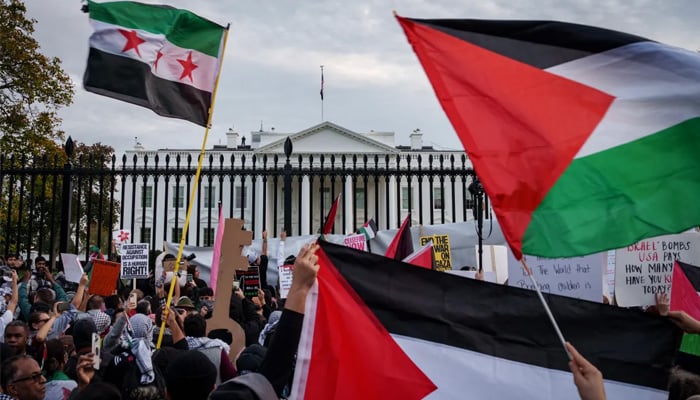
Demonstrators display Palestinian flags during a rally outside the White House, advocating for a ceasefire in the Israeli-Palestinian conflict. — AFP
March 15: Expulsions to El Salvador
Using a little-known wartime statute, the administration expels over 200 alleged gang members to a high-security prison in El Salvador. The legality of this action is challenged and is now pending in the Supreme Court.

Homeland Security Secretary Kristi Noem speaks during a prison tour in El Salvador. — AFP
March 26: Greenland in Focus
Trump reiterates his desire for the U.S. to take control of Greenland, insisting on its importance for national security. His comments result in sharp protests from Danish leaders and limit the visit of the Vice Presidential couple to mainly military sites on the island.
April 2-9: Tariff Imposition
On April 2, Trump announces an extensive set of tariffs on numerous countries, claiming they take advantage of the U.S. However, by April 9, he backs down slightly, applying a temporary 10% tariff on most imports but imposing significantly higher tariffs on Chinese goods, causing volatility in global markets.

Trump’s announcement on tariffs sends ripples through international markets. — AFP
The past few months have showcased Trump’s determination to reshape American policies and establish a controversial legacy during his second term. As developments continue, the implications of these actions will unfold further.


